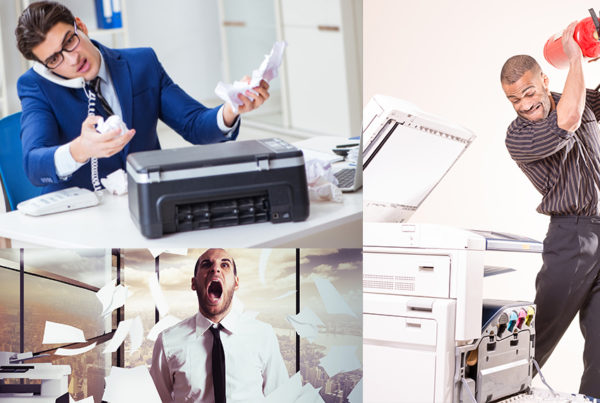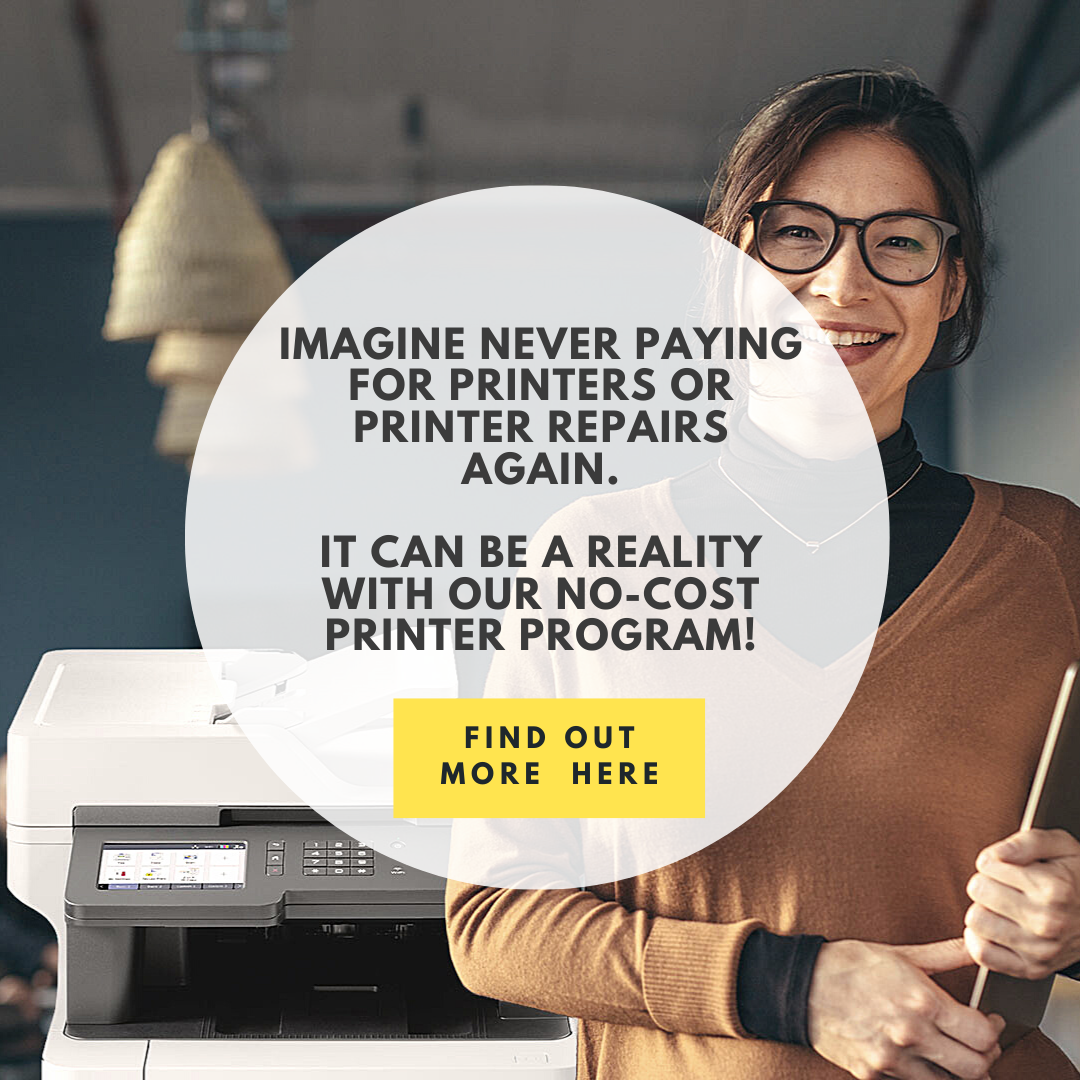What you print is important, as we say. It brings your ideas to life. And life is better in vivid hues. Therefore, printing documents in color can significantly amplify your marketing and sales. Even more: color printing expresses your brand and the values behind it. It’s like the 1998 film Pleasantville — where a black and white television show set in the 50s becomes real and gains color each time a character thinks a personal or innovative idea.
Unlike the imaginary town of Pleasantville, however, printing in color can go backward; printed color materials gradually lose their luster or are always average. This color devolution isn’t because your office is becoming an Eisenhower-America television show, but because your printing might need some DIY maintenance.
Here are some color printing best practices that will ensure you keep bringing your ideas to life in the best possible color.
Paper Quality
Not all paper is created equal. Lower quality paper may cause dullness of color or bleed on documents. You can count on regular copier paper being inferior in quality, so it should be avoided for color documents. Bond paper with cotton fibers or paper with ribbed, linen, or eggshell are also questionable for color printing. On the other hand, not all recycled paper is of inferior quality.
I know this can seem complicated. Who has time to research the subtleties of printer paper? We suggest you leverage your printer or copier provider to find the type of paper that best works for your color printing needs.
Beyond paper, the type of document also matters for color printing quality, as we show in our eBook Top 5 Worst Documents to Print in Color. We go in-depth in the eBook on the reasons for these documents, but we’ll give you some spoilers here:
- Emails
- Web pages
- PowerPoint presentations
- Personal print jobs like recipes or vacation photos
- Big color documents on a small printer
Printer settings
The default printer settings are no one’s fault, except yours if you expect them to work precisely with the color printing need of your office.
As an illustration, you can quickly increase the print resolution to maximum dpi option in the print dialog screen. Furthermore, some printers need to be changed to a CMYK color mode in order to optimize color printing. How you change this setting depends on the printer software, but a mere Google search will yield quick results.
While we’re on the topic of settings, make sure your computer monitor’s color settings are calibrated to your printer settings (or at least are set to the highest quality). This ensures you don’t have a continual discrepancy between what you see on the screen and the color document that comes out of your printing device.
Printer cartridge quality
Like your printer paper, ink and toner vary in quality. This also means the quality of your color printing could be compromised.
Does this mean you should only trust name-brand ink and toner (or OEM as it’s called in the industry)? Not at all – especially in a time when technology makes remanufactured cartridges more reliable. As with any product, though, always do your homework. To understand and find the best quality remanufactured printer cartridges, we suggest you take a look at our article The Pros and Cons of Remanufactured Toner Cartridges.
We also advise you take our color challenge to see for yourself how the idea of OEM-superiority isn’t the case.
Also, taking care of your printer cartridges matters for high-quality printed materials. Such simple actions as storing printer products in cool places or properly installing cartridges can go a long way in the caliber of your printed materials.
Go for the inkjet
Inkjet printers are better suited for printing color documents, high-quality photos, or anything requiring tonal depth or brilliance. Toner technology (dry powder) that powers laser printer cartridge doesn’t match inkjet technology (wet ink) when it comes to color or photo printing. Mind you, laser printers tend to last longer and are more economical in the long run. Nevertheless, there is nothing wrong with the graphics or marketing arm of your business having an inkjet printer tucked away for superior printed materials.
Make your colors work for you
Riding your printer to an early death or wasting materials is not good for business (or the environment). What you print is important, indeed, but you should make every print count. That’s one of the reasons our eBook, the Psychology of Color Printing, is so popular. Color matters a lot by these statistics:
- Ninety-two percent of people believe color presents an image of impressive quality
- Ninety percent feel color can assist in attracting new customers
- Eighty-three percent believe color makes them appear more successful
Using color in the right context is essential. Here are some tips to help you before the next time you print a color document for a customer:
Red: Gets reader attention and urges them to act. Exudes warmth, love, anger, danger, boldness, excitement, speed, and other extroverted emotions
Orange: Expresses extroverted feelings that also include warmth, cheerfulness, low cost, affordability, enthusiasm, and creativity.
Yellow: An attention-grabbing hue that communicates comfort, liveliness, hunger, optimism, happiness, and energy.
Pink: Says femininity (in the West) and is popular with younger children; evokes feelings of love, caring, and nurture.
Green: An environmental color that can as well convey durability, reliability, luxuriousness, optimism, well-being, springtime, safety, honesty, harmony, and freshness.
Blue: No surprise that this color communicates peace, professionalism, loyalty, reliability, honor, and trust. But it also conveys coldness, winter, depth, stability, and professionalism.
Purple: Expresses power, royalty, nobility, elegance, luxury, and sophistication.
Brown: This is a wholesome color that symbolizes confidence, relaxation, reassurance, nature, and durability.
These mentions are a quick summary, but please download the free eBook for a deeper dive into color psychology and how to make it work for your brand.
Are you getting to Pleasantville?
Maybe we’re dating ourselves with the mention of the film (it did have Tobey Maguire and Reese Witherspoon before they hit the big time as Spidey and a hairdresser lawyer, respectively). But any Hollywood movie knows the power of vivid colors, and so should your office for any project or collateral that wants to create a change or instill action in an audience. Many of our buying decisions are unconscious, as research shows. Color plays a huge factor.
What you print is important. Making sure color is printed right can literally change the reality of your business and customers.
Looking for a provider that can assist you with getting the printer or copier that will give you those documents to bring your ideas to life? Please contact us.







